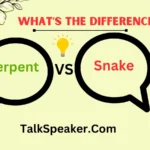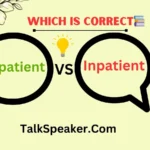Understanding the nuances of English grammar can sometimes feel like navigating a labyrinth. One common area of confusion involves the terms “self” and “itself.” Both are essential to mastering reflexive pronouns and possessive forms, but they are often misused or misunderstood.
In this comprehensive guide, we’ll unravel the complexities of these terms, provide clear examples, and help you improve your grammar skills.
Defining Reflexive Pronouns in English
What Are Reflexive Pronouns?
Reflexive pronouns are used when the subject and object of a sentence are the same. They are essential for clarity in sentences where the action reflects back on the subject.
- Reflexive Pronouns List:
- Myself: Used when the speaker is both the subject and the object.
- Yourself: Used for the listener or when addressing one person.
- Himself: Used for a male subject.
- Herself: Used for a female subject.
- Itself: Used for objects or animals when the subject is “it.”
- Ourselves: Used when the subject is “we.”
- Yourselves: Used when addressing multiple people.
- Themselves: Used for multiple subjects or animals.
Example:
“I made the cake myself.”
In this sentence, “myself” reflects back on “I,” showing that the speaker made the cake.
The Purpose of Reflexive Pronouns
Reflexive pronouns serve two primary functions:
- Self-Reference: Indicating that the subject is also the object of the action.
Example: “She prepared herself for the challenge.” - Emphasis: Adding emphasis to the subject of the sentence.
Example: “The CEO himself approved the new policy.”
The Usage of ‘Itself’
When to Use ‘Itself’
“Itself” is a reflexive pronoun used for objects or animals when the subject is “it.” This is crucial for maintaining grammatical consistency and clarity.
- Function of ‘Itself’:
- Reflexive Use: Reflects the action back to the subject.
Example: “The cat groomed itself.” - Emphasis: Adds emphasis to the subject.
Example: “The machine itself is quite efficient.”
- Reflexive Use: Reflects the action back to the subject.
Examples in Sentences
Understanding how to use “itself” correctly can improve both your writing and comprehension.
- Correct Use:
- “The book opened by itself on the right page.”
- “The system corrected itself after the error.”
- Contextual Variation:
- Inanimate objects often use “itself” to describe automatic or self-regulating functions.
- Example: “The thermostat adjusted itself to the desired temperature.”
Understanding ‘Its Self’
Clarifying ‘Its Self’
The term “its self” is generally incorrect in standard English grammar. The confusion often arises from mixing possessive forms with reflexive pronouns.
- Incorrect Usage:
“The organization focuses on its self-improvement.”
This is incorrect because “its self” is not a standard form in English.
Philosophical and Religious Texts
While “its self” may appear in specific philosophical or religious contexts, it is not used in everyday grammar. These texts might use “its self” to discuss concepts of selfhood or identity, but this usage is specialized and not part of standard grammar.
- Example: In some philosophical discussions, “its self” might refer to a concept like self-awareness or self-identity.
Common Mistakes and Misconceptions
Mixing ‘Its’ and ‘It’s’
One of the most common grammar mistakes involves confusing “its” (possessive pronoun) and “it’s” (contraction for “it is” or “it has”).
- Possessive Pronoun ‘Its’:
- Shows ownership or association.
Example: “The company changed its policy.”
- Shows ownership or association.
- Contraction ‘It’s’:
- Short for “it is” or “it has.”
Example: “It’s going to rain today.”
- Short for “it is” or “it has.”
Misusing ‘Itself’ and ‘Its Self’
Common errors include:
- Using “its self” when “itself” is correct.
Incorrect: “The machine fixed its self.” Correct: “The machine fixed itself.” - Using “itself” incorrectly in possessive contexts.
Incorrect: “The cat licked its self clean.” Correct: “The cat licked itself clean.”
Identifying Contractions and Possessive Pronouns
Understanding Contractions
Contractions combine two words into one, often using an apostrophe to indicate the omitted letters.
- Examples:
- It’s: Contraction of “it is” or “it has.”
Example: “It’s been a long day.”
- It’s: Contraction of “it is” or “it has.”
Possessive Pronouns
Possessive pronouns show ownership and do not use an apostrophe.
- Examples:
- Its: Indicates possession by “it.”
Example: “The dog wagged its tail.”
- Its: Indicates possession by “it.”
Practical Examples and Exercises
Strengthening Your Grammar with ‘Itself’
Improving your understanding of reflexive pronouns involves practice.
- Exercise 1: Fill in the blanks with “itself.”
- “The computer restarted ___ after the update.”
- “The company prides ___ on its customer service.”
- Exercise 2: Correct the sentences.
- “The book opened its self to the first chapter.”
- “The project completed its self on time.”
Interactive Examples
Real-life examples can help solidify your understanding.
- Example:
Scenario: You’re writing an email about a system upgrade.
Correct Sentence: “The software updated itself automatically.”
Conclusion
Summary of Key Points
To master the use of “self” and “itself,” remember:
- Reflexive Pronouns: Used when the subject performs an action on itself.
- ‘Itself’: Correct for reflexive use with “it.”
- Avoid ‘Its Self’: Typically incorrect in standard grammar.
Encouragement for Mastery
Mastering these nuances will enhance your writing clarity and professionalism. Keep practicing, and soon, these concepts will become second nature.
Glossary
- Reflexive Pronoun: A pronoun used to indicate that the subject and the object of a sentence are the same.
- Possessive Pronoun: A pronoun that shows ownership.
- Contraction: A shortened form of a word or group of words.
This comprehensive guide is designed to provide a clear, detailed understanding of the correct usage of “self” and “itself,” avoiding common pitfalls and enhancing your grammatical skills.

Amelia Harris, a passionate educator, simplifies English grammar and vocabulary for learners of all levels. With her engaging style, mastering English has never been easie




